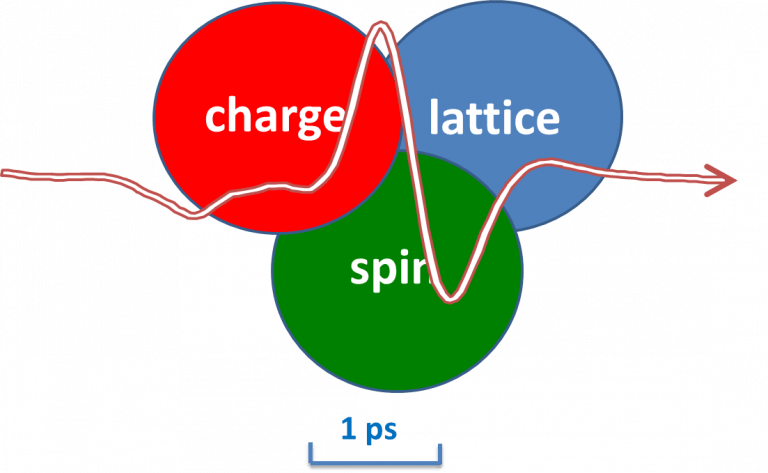Momentum relaxation times of conduction electrons, lattice oscillation periods, spin-flip times and spin precession periods; all these elementary processes in electron, phonon and spin subsystems of a solid occur on the ultrafast timescale of tens of femtoseconds to a few picoseconds.
This timescale τ matches the terahertz (THz)
frequency range, broadly defined as ω/2π ~ 0.1 – 30 THz, and corresponding to the period of oscillation of electromagnetic fields in the range ~ 10 ps – 30 fs,
or to the photon energies of ~ 0.4 – 120 meV.

This facilitates the use of THz radiation for spectroscopy in a unique regime of ωτ ~ 1, where the elementary ultrafast dynamics in condensed matter can be directly resolved.
Based on modern femtosecond laser technology, ultrafast THz spectroscopy allows one to directly probe equilibrium and non-equilibrium dynamics of charge, lattice and spins with temporal resolution down to 10s of femtoseconds, in a contact-free and non-destructive fashion.
The all-optical, contact-free nature of ultrafast THz spectroscopy in turn conveniently allows for investigation of ultrafast dynamics on the nano-scale. Systems such as e.g. nano-particles, organic and inorganic nanostructures (e.g. semiconductor quantum wells, dots and wires, graphene, carbon nanotubes, 2D materials, spin valves etc) can be routinely investigated, without the need to attach the contacts or embed markers of any sort. The information on such processes as e.g. linear and nonlinear nano-scopic motion of charge (both collective or single) on the femtosecond timescale; or the ultrafast dynamics of spins and lattice, can be directly and reliably inferred from the experiments. All this makes ultrafast THz spectroscopy an invaluable tool in modern nanoscience.
Based on modern femtosecond laser technology, ultrafast THz spectroscopy allows one to directly probe equilibrium and non-equilibrium dynamics of charge, lattice and spins with temporal resolution down to 10s of femtoseconds, in a contact-free and non-destructive fashion.
The all-optical, contact-free nature of ultrafast THz spectroscopy in turn conveniently allows for investigation of ultrafast dynamics on the nano-scale. Systems such as e.g. nano-particles, organic and inorganic nanostructures (e.g. semiconductor quantum wells, dots and wires, graphene, carbon nanotubes, 2D materials, spin valves etc) can be routinely investigated, without the need to attach the contacts or embed markers of any sort. The information on such processes as e.g. linear and nonlinear nano-scopic motion of charge (both collective or single) on the femtosecond timescale; or the ultrafast dynamics of spins and lattice, can be directly and reliably inferred from the experiments. All this makes ultrafast THz spectroscopy an invaluable tool in modern nanoscience.
